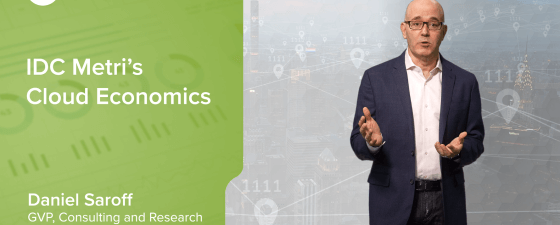Get Complete Visibility and Control of Your Cloud Expenses
The striking shift towards cloud in the past few years reflects the compelling benefits to expanding cloud initiatives. With its ability to fuel agility and innovation, cloud initiatives are key factors in most digital transformation (DX) efforts. Despite this, IDC estimates that 10-30% of cloud spending is wasted,* even as companies plan on spending more on cloud.

What Can We Do For You?
Cloud Economics Framework

IDC understands that how your cloud is contracted, structured and used is key to its value delivery to your organization.
We deliver actionable, targeted recommendations. These recommendations identify key areas for improvement and their associated benefits. Action Based.
- Cost management and efficiency
- Forecasting
- Unused resources
- Workload optimization
- Discount options and licensing
- Multi-cloud cost optimization
- Tying costs to utilization
- Continuous improvement
- CSP cost benchmarking
How Will It Impact Your Company?
-
25%
Cost Reduction In One Year
-
50%
Defect Reduction During Test Phases
-
60%
Lower Incident Volumes In One Year
What benefits it brings?
-
Business Benefits
45% of organizations consider cloud expenditures their top IT expenditure priority, even as 90% consider reigning in the cost of IT delivery as a priority*. (****IDC Future Enterprise Resiliency & Spending Survey – Wave 1, February 2022, n=798) Flexibility is a key benefit of cloud, but cloud complexity makes it challenging to control costs without choking that agility. Many organizations put in place cost control mechanisms that defeat much of cloud’s value.
-
What You Get Assess
Assess
- Contracts and product
Communicate
- Billing and monitoring data
- Cost data
- Solutions
- Forecasting
Analyze
- Workloads and utilization
- Licensing
- Performance and sizing
- Architecture
Inventory
- Billing data
- Monitoring data
- Architecture
Monitor
- Cost outliers and cost benchmarking
- Optimization of workloads and cost